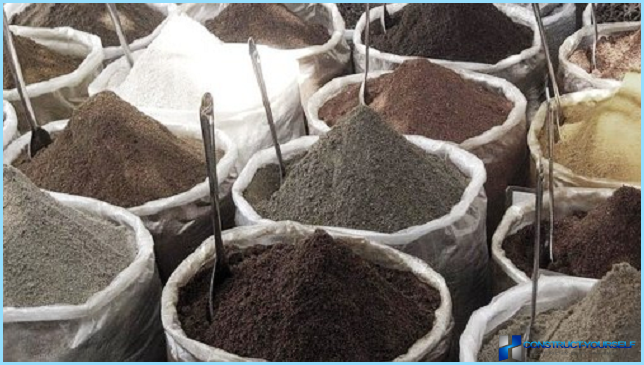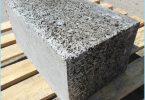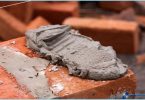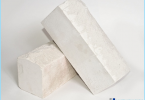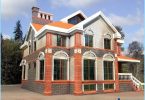The contents
- Sand-cement mixture from the remnants of masonry mortar
- The foundations and proportions of the preparation of solutions
Finishing work always begin with to repair problems with the walls with plaster «the appendage». In each case, for effective use of the capacity of the plaster it is important to maintain the correct proportion of mortar of cement and sand. You can save money and try to prepare the mortar for plaster from the remains of masonry composition, and it is possible to make a mix for science, to comply with the required proportions of cement and sand, then the solution will stay long and hard.
Sand-cement mixture from the remnants of masonry mortar ↑
For masonry use in standard proportions of a mixture of sand and cement binders with the addition of a small proportion of lime or clay. The brick masonry is knit using standard proportions: the 400 take a bucket of cement to 4 buckets of sand for 500 grade sand put in a bucket more. Depending on the proportions of lime or clay composition is obtained rigid and more plastic. This is extremely important for the retention of the brickwork in a vertical position.
Say at once: the remains of masonry mortar in its original form is not very suitable for plaster walls for a number of reasons:
- Proportions of the plaster have a higher cement content, with minimized amount of lime or clay;
- The remains of the masonry mortar at the beginning of plaster works already partially loses ductility and will give poor adhesion with the surface of the masonry, and concrete surfaces in General, such a mixture will not stick without a special adhesive additives.
The foundations and proportions of the preparation of solutions ↑
A plaster composition based on a mixture of sand and cement you need to prepare and use as soon as possible, before the start of the process of partial binding of free water of the cement grain. You can buy ready-made plaster mix for all kinds of plaster, which has the optimum proportions of sand and cement.
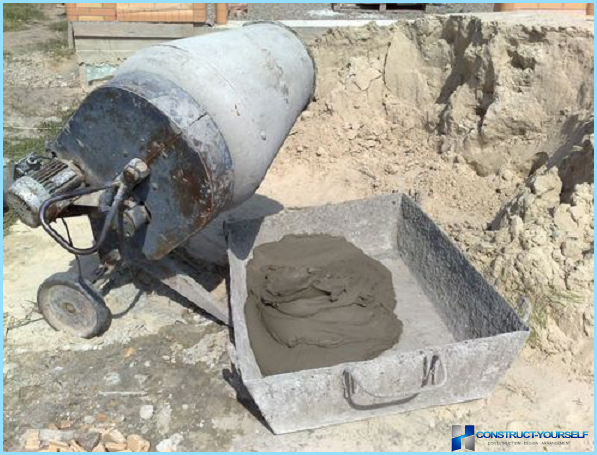
The best option is the situation if you can outbid serious construction site a few bags from a large batch of tested compounds, is not very old and tested. The same applies to the purchase of cement. The most problematic from the point of view of quality, is considered to be using the old bagged or bulk material. In this case, the recommended proportions of cement-sand 1:3 should be corrected to make a couple practical test batches. Most often in the plaster using a 400-shpts u stamp or PTS.
To perform work on correcting the defects of geometry and curvature of the walls use as a primer masonry mortar with cement PC I with the proportions of sand/cement 3:1. For mortar leveling under the main mass of the plaster to mark the 400 – PTS II proportion, the ratio increased to 5:1.
Choose sand for mortar ↑
Requirements for sand for plaster composition is higher than for masonry option:
- The sand must be sifted and washed, are extremely important to large and medium sand fractions and to exclude dust and the inclusion of clay.
- The larger the fraction of sand, the better the grip with the wall, and it turns out harder plaster. If there is nothing but coarse sand, you can add a small amount (5%) fat clay, crushed to a fine powder. At higher clay content or the presence of a mixture of lumps of clay on a plaster surface can form a mesh of fine cracks.
- Too small fraction of sand can make a mortar of plaster plastic and too slippery, keeps bad deposited layer, gutter. Recommended maximum layer of this sand, usually not more than 3 mm, it is excellent for finish works of the surface finish.
The most used in plaster cement ↑
Depending on the goals and objectives for mortar stucco used Portland cement or Portland slag cement grade not lower than 400 minutes, less frequently, in special cases, the 500th mark. Most artists know the technique of cooking and the necessary proportions of the solution, the requirements for sand and cement, but are unable to successfully pick up the necessary make for specific types of plaster, or working conditions.
For large areas of plastering work, with a small amount of patching or leveling of walls, are used portlandy M400 first type, on the label after the letters PTS you can see the marking I or II. The first refers to the cement with a maximum speed of hardness and rigidity. Well established listed cement plaster exterior walls, in conditions of high humidity and low temperature.
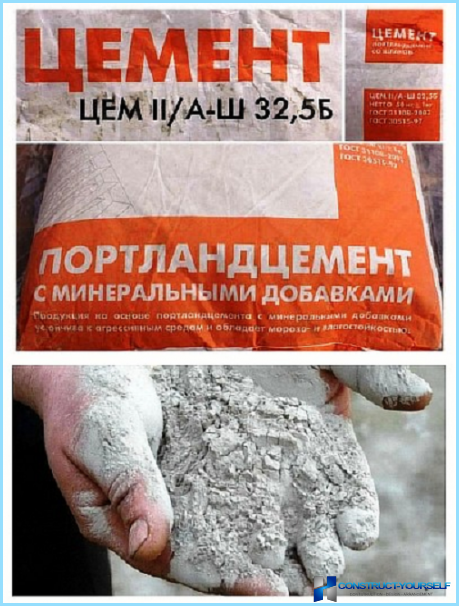
The second type corresponds to a Portland cement with special additives to reduce internal stresses of concrete and cement castings, to improve plasticity and frost resistance composition for plastering. This cement is well suited for alignment of walls.
In addition, there are many specialized types of cement with improved characteristics, but they are used in industrial structures, for ordinary plaster work is often not applied.
The use of special modifying additives ↑
It is not always possible to achieve high-quality «sticking» plasters on brick or, especially, concrete Foundation walls. Often the cause of the abnormal adhesion is the wrong consistency of the prepared plaster mass or poor preparation of the surface of the wall. The consistency of the composition for the plaster to check up simply enough – with a smooth metal surface of a trowel or rules solution slides for about 7-8сек one compact piece, and does not drip or stick firmly to the instrument.
Ready plaster mix «stickiness» mortar for plastering artificially increase additives in small proportions powder-water soluble carbosilane or polyacetate adhesive compositions. They displace the air from the surface of the plaster mass and reduce the surface tension bound water.
Because of this hardened layer becomes very flat and smooth surface. Alternatively, for the preparation of the walls and mixes for plaster can be used liquid formulations of KMS, intended for priming of walls and prepare the plaster.
But most often, to improve the plasticity of the plaster of cement-sand mortar on the basis of the M400 I masters and Amateurs used cheap washing powder or liquid synthetic detergent in the ratio of 50-70 g per 50 litre tank mixture. The effectiveness of this method is difficult to assess on conflicting reviews, but to be sure better to check the recipe and saw small portions of the whole to plaster.
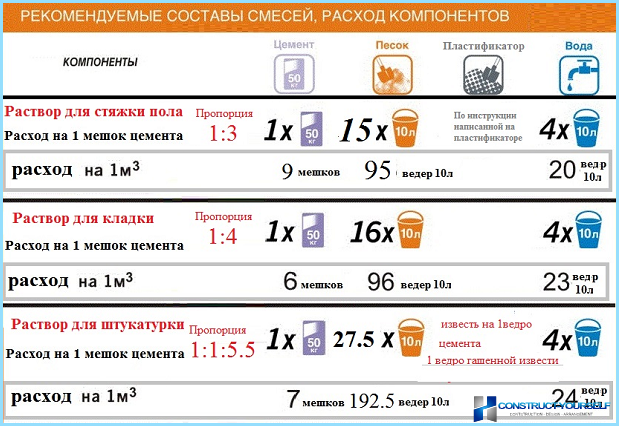
Roughly similar, but less expressive effect of a small amount of fat clay, 50-100 g per 15 litres of water. The clay mass was triturated with water to obtain a homogeneous turbid suspension, which is charged with a dry mixture of cement and sand. Plaster mass becomes more plastic and less susceptible to high ambient temperatures, dry longer than usual. Overdose required proportion of clay or drying on a strong draught on the plastered surface can form a mesh of microcracks.
In the previous recipe clay you can replace the lime paste or liquid lime substitute in the proportions of 150 grams of additive per 50 kg dry mix. This version of the plaster can be prepared for exterior walls and basement.
For walls where the surface is subjected to regular and strong enough to temperature changes, it is better to use the additive in the mixture a small proportion of the chopped fiber material based on polymers, fiberglass or firetracker.
Conclusion, special components for plaster ↑
To reduce the density of the plaster and to increase thermal insulation in the composition of the plaster can be added in the correct proportions special types of sand and crushed natural raw materials. Flour and cereal crushed dolomite and red-hot of vermiculite to increase the number of pores and microvoids in the volume of cement mortar plaster to 30-33%, and in special proportions air entrainment in the plaster mass can reach 47-50%.
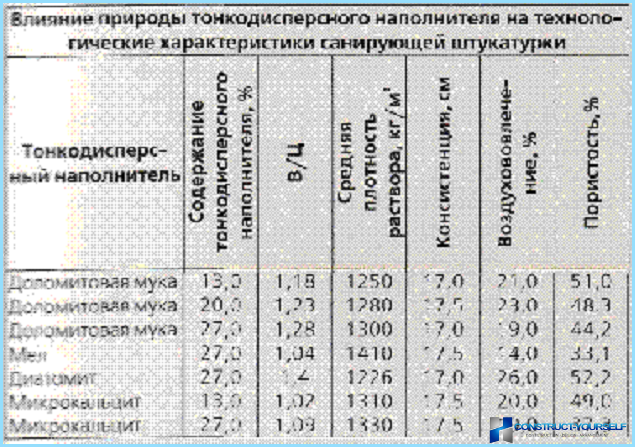
The average content in the proportion of such fillers can range from 13до 27%. Significantly reduced heat loss, improved by 20-25%, acoustic quality, increased water vapor permeability, while maintaining water-repellent qualities.
To increase the number of pores can also by special reagents, such Ceresit CR166, specially designed to reduce the amount of water vapor in the atmosphere of the closed premises.
Preparing the plaster does not require outstanding knowledge enough to bear exactly the proportion of cement and sand and use a special additive in the solution. Buy ready plaster mix will cost in 2 – 2,5 times more expensive with the average level of quality plaster.

